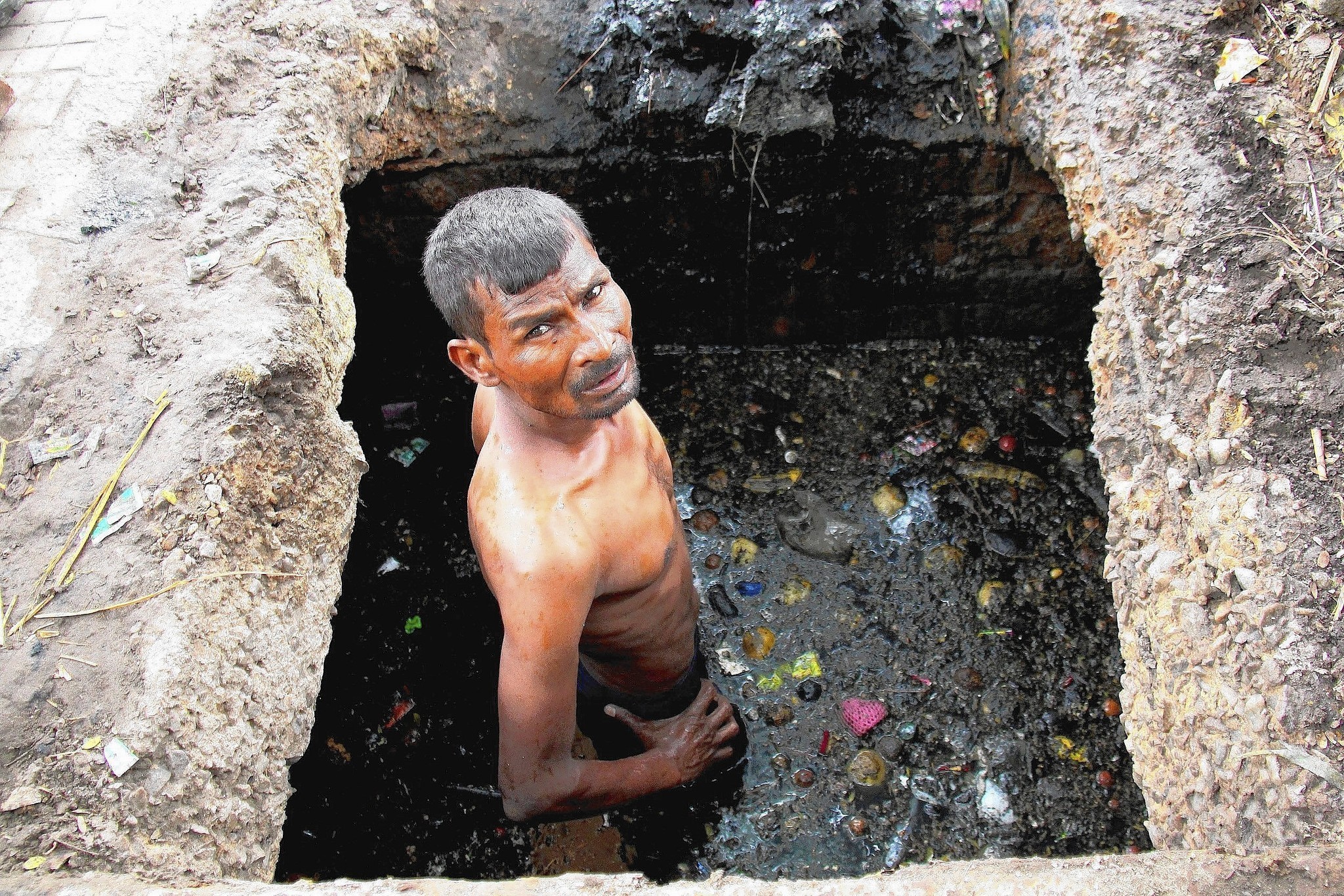A day after Prime Minister Narendra Modi picked up a broom and launched the ‘Swachhata Hi Sewa’ campaign, the national capital witnessed the death of yet another sanitation worker on Sunday, who fell into the sewer of a building in Dwarka’s Dabri area. Anil (27) suffocated to death, according to preliminary reports.
This incident follows a week after five men died after entering a sewage treatment plant in Moti Nagar, Delhi, and three more lost their lives in neighbouring Ghaziabad after having inhaled toxic fumes in a water tank in July. In yet another instance reported from Chhattisgarh, five people suffocated to death inside a septic tank in the Jashpur district over the weekend.
The series of deaths do not seem to stop, owing to the brazen flouting of basic safety norms as well as widespread exploitation of workers. The caste stigma intertwined with poverty is glaringly evident across these incidents as a majority of the dead belong to the lower castes. The documents accessed by the Safai Karamchari Andolan (SKA) in Anil’s case show that he decided to take the plunge into the 20-feet-deep tank, as he had already taken money from the contractor he had no choice but to enter the tank.
Speaking to Newsclick, Bezwada Wilson of the SKA said, “There is a need to shake up people who are oblivious to the open flouting of norms that takes place.” The SKA is currently organising marches across the city in multiple areas to create awareness on this issue. The pattern of the deaths has also been criticised by the Mazdoor Kisan Shakti Sangathan (MKSS). In a statement, the organisation highlighted that such instances point to the continuing blight and shame, and are an indictment of the Indian government.
ONE DEATH EVERY 5 DAYS
The gross under-representation of these deaths becomes clear with the latest data compiled by The Indian Express. The data suggests that the frequency of such incidents is one manual scavenging death in every five days. Compiled by using newspaper reports and limited state records, the report shows that 109 districts could identify only 62 manual scavengers. The Indian Express had sent its survey to over 170 districts; only 109 filed their response. The numbers mentioned in the report were collated by the National Commission for Safai Karamcharis (NCSK), the statutory body that was set up by an Act of Parliament for the welfare of sanitation workers.
Earlier, the records of NCSK had shown that 123 people had lost their lives since January 2017. Officials involved in the exercise admit, however, that even this number could be a gross under-estimation, considering the lack of data, as out of 28, only 13 Indian states have filed their records. Wilson added, “The data is extremely under-represented, the truth of the extent of the problem cannot be made out currently.”
Under the Prohibition of Employment as Manual Scavengers and their Rehabilitation Act, an amendment to the law in 2003 brought cleaning of septic and sewage tanks under its purview. Section 7 of the law prohibits local authorities or agencies from employing a worker to clean sewers and septic tank. Despite these provisions, the situation on the ground remains dire. Newsclick had previously reported on problems with the collation of this data, when the Delhi government had found only 32 manual scavengers in its survey in August this year. In a previous attempt in June this year, it was reported that more than 53,000 manual scavengers are employed in 12 states, including Uttar Pradesh, Maharashtra, Rajasthan and Haryana.
As the data collation exercises pick-up pace, the fight to change the realities of the workers on the ground is finding renewed voice, with a major protest march scheduled on September 25 in Delhi.





